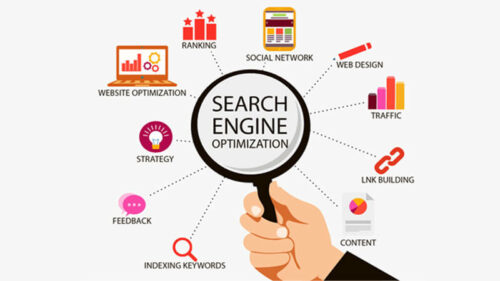How to Basically Optimize Vs. How to In-depth Optimize
In the dynamic realm of digital marketing, the term “content optimization” often circulates in discussions about making content more visible on search engines. However, the essence of optimization lies not in catering to search engine bots but in creating content that resonates with human audiences. This blog explores the dual facets of content optimization—basic and in-depth strategies—and unveils the critical reasons behind their importance.

Basic Optimization
- Keyword Research: Identifying and targeting relevant keywords for your content is the cornerstone of basic optimization. Uncover the terms your audience is searching for and seamlessly integrate them into your content.
- Meta Tags: Optimize meta titles and descriptions to improve click-through rates. Crafting compelling meta tags not only attracts users but also aligns with search engine algorithms.
- Header Tags: Proper use of header tags (H1, H2, etc.) structures your content, making it more readable for both users and search engines.
- URL Structure: Create SEO-friendly URLs that are concise, descriptive, and easy to understand.
- Image Optimization: Enhance accessibility and search engine understanding by adding alt text and optimizing image file names.
- Content Quality: Prioritize producing high-quality, relevant, and engaging content to capture and retain audience attention.
- Mobile Optimization: Ensure your website is mobile-friendly to accommodate the increasing number of users accessing content on mobile devices.
- Page Load Speed: Improve page load times for a better user experience, directly impacting search engine rankings.
- Sitemap Submission: Submit XML sitemaps to search engines for efficient crawling and indexing of your website.
In-Depth Optimization
- Technical SEO: Address crawl errors, indexing issues, and site architecture to optimize the technical foundation of your website.
- Backlink Analysis: Conduct a thorough analysis of existing backlinks and build a high-quality backlink profile for improved authority.
- Competitor Analysis: Analyze competitors to identify strengths and weaknesses, informing your content and SEO strategy.
- User Experience (UX): Enhance overall user experience on the website, considering factors like site navigation, readability, and accessibility.
- Site Structure: Establish a well-organized site structure for easy navigation, benefiting both users and search engines.
- Local SEO: Optimize for local search with tactics such as local citations and Google My Business optimization if applicable.
- Schema Markup: Implement structured data through schema markup to enhance search engine understanding of your content.
- Content Strategy: Develop a comprehensive content strategy, including long-form content, multimedia, and evergreen content to cater to diverse audience needs.
- Social Signals: Integrate social media signals for a holistic online presence, promoting your content across various platforms.
 How to Optimize Content for SEO
How to Optimize Content for SEO
- Target Relevant Keywords with Traffic Potential: Identify and incorporate keywords that align with your content’s theme and have traffic potential.
- Include Semantically Related Keywords: Expand your content’s reach by including keywords closely related in meaning to your main target keyword.
- Cover the Topic Comprehensively: Stand out in search results by thoroughly covering the search query, addressing customer questions, and offering unique value.
- Optimizing Content for Backlinks and Shares: Craft content that is not only link-worthy but also shareable. Become a “link magnet” by being original, establishing authority, taking a stand, and riding trends.
- Importance of User Intent: Understand the four main categories of user intent—Informational, Navigational, Commercial, and Transactional—to tailor your content effectively.
- Making Your Images Work Harder: Optimize images with alt tags, image tags, and descriptive file names. Use captivating visuals to increase engagement and accessibility.
Conclusion
In conclusion, SEO optimization is a multifaceted strategy that encompasses both basic and in-depth techniques to enhance a website’s visibility and performance. While basic optimization lays the foundation, in-depth strategies provide a competitive edge and ensure long-term success. A holistic approach, considering content, technical aspects, and user experience, is vital for driving organic traffic, increasing visibility, and establishing a robust online presence in the ever-evolving digital landscape. Regular updates, monitoring, and adaptation to industry trends are key for ongoing success in the dynamic field of SEO optimization.


